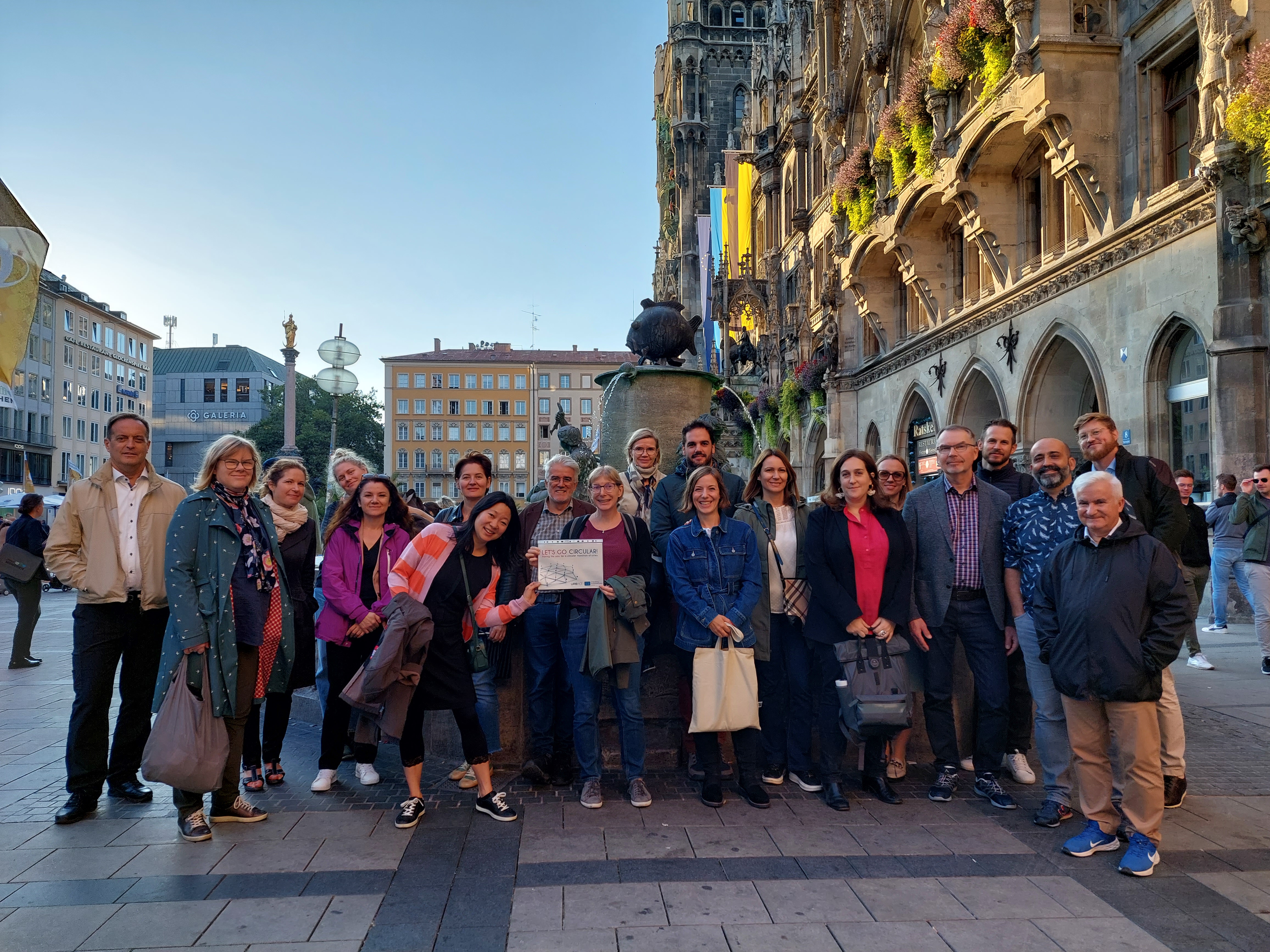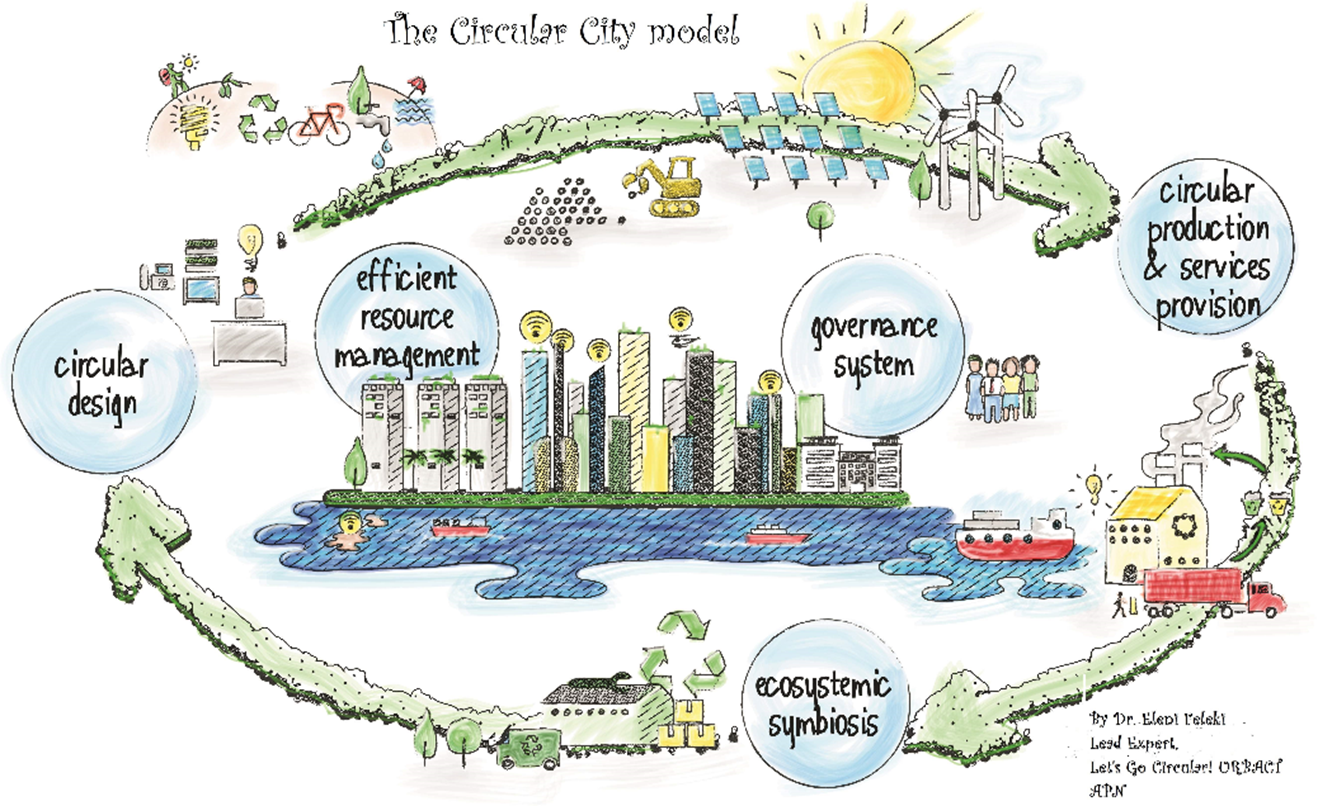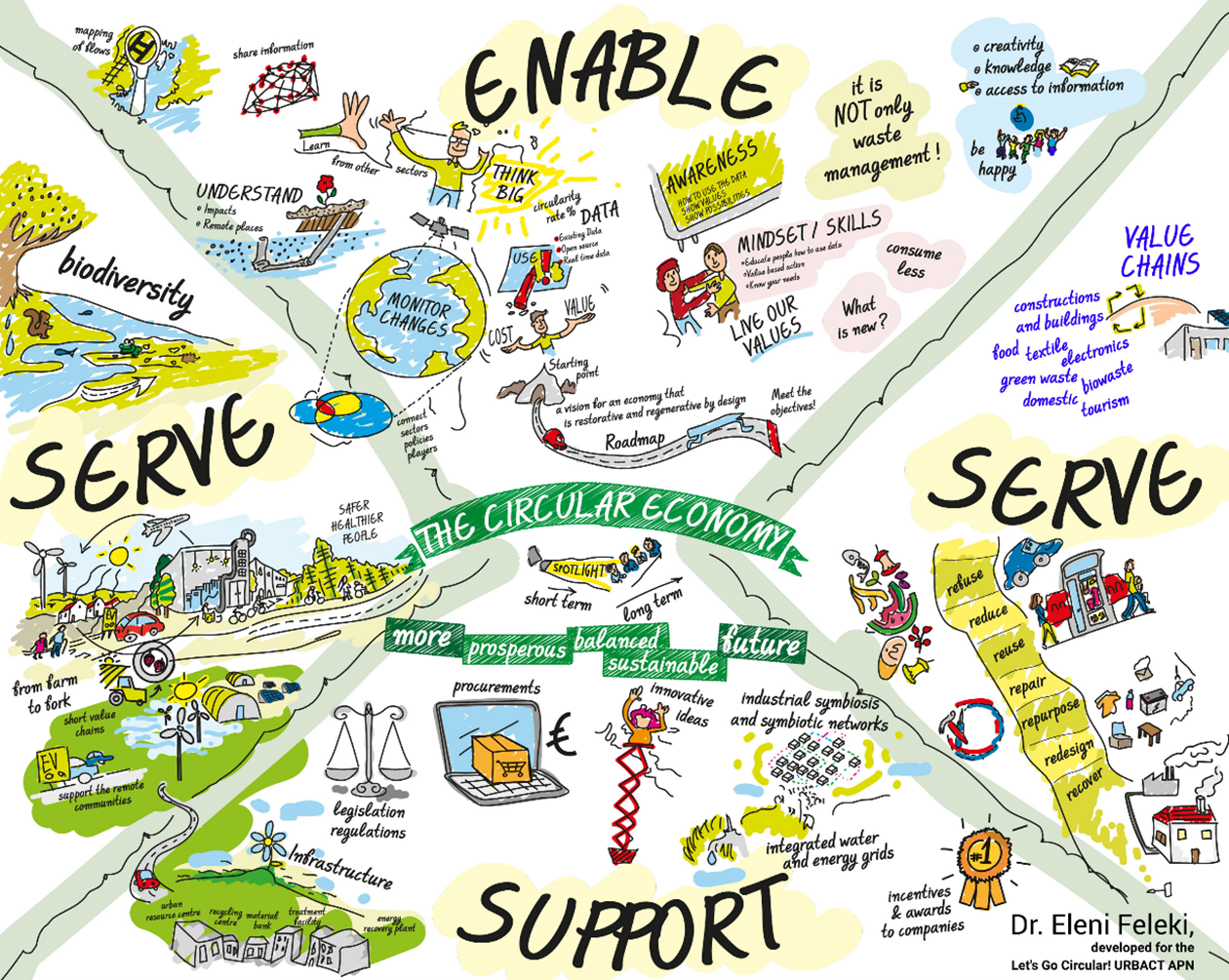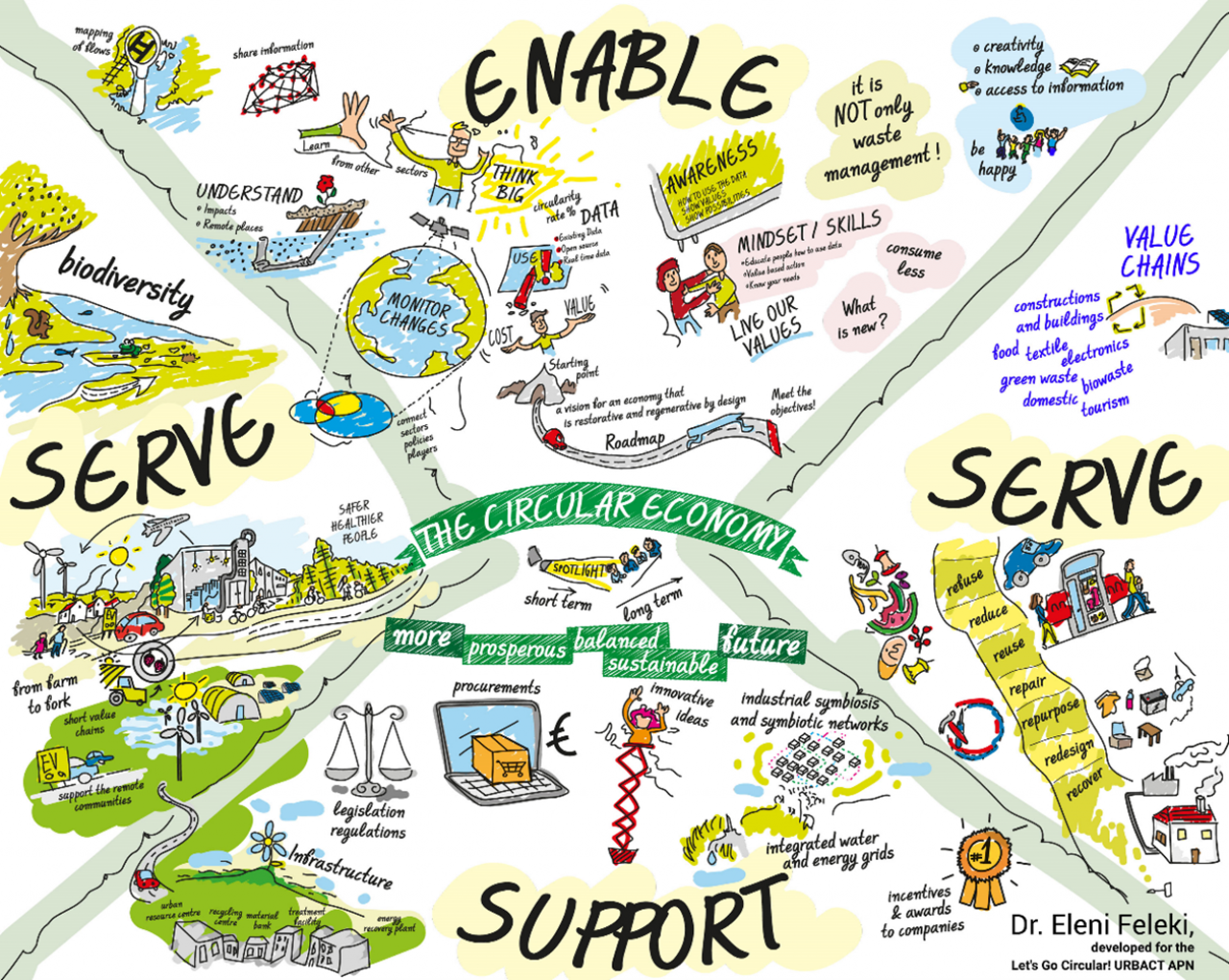Where do we stand?
Meeting the target of doubling the circularity material use rate (CMUR), meaning increase from 11.7% in 2021 to 23.4% by 2030, is rather unlikely, considering the very slight increase in the CMUR in the previous decade, no increase at all between 2020 and 2021 and projections by the OECD predicting an increased future demand for materials in the EU by 2030. The latter is important, since increasing recycling alone will not allow the EU to achieve the target. Increased recycling coupled with reduced material use would be required.
Nevertheless, there are weaknesses in the monitoring framework of the circular economy. Moreover, circular economy notion is still very much linked to waste management instead of reflecting different R-strategies, and most importantly reduction.
Some key facts
- The EU generates more than 2.5 billion tons of waste a year. TEU exports of waste to non-EU countries reached 32.7 million tons in 2020.
- The majority of shipped waste consists of ferrous and nonferrous metal scrap as well as paper, plastic, textile and glass wastes and mainly goes to Turkey, India and Egypt
- Electronic and electrical waste, or e-waste, is the fastest growing waste stream in the EU; less than 40% is recycled
- An estimated 20% of food is lost or wasted in the EU
- Packaging waste in Europe reached a record high in 2017
- Construction accounts for more than 35% of total EU waste
- More than 20% of energy consumed in the EU comes from renewable sources
- 77% of EU consumers would rather repair their goods than buy new ones, but ultimately have to replace or discard them because of the cost of repairs and lack of service provided.
- Sectors not covered by the current Emissions Trading System – such as transport, agriculture, buildings and waste management – still account for about 60% of the EU’s overall emissions
- In 2021 alone, existing ecodesign requirements saved consumers €120 billion. The rules have also led to a 10% lower annual energy consumption by the products in scope.
- EU forests absorb the equivalent of nearly 7% of total EU greenhouse gas emissions each year.
Why are cities important for circular economy?
The challenges
Cities are at the centre of key decisions determining economic growth, social well-being, and environmental benefits. Despite taking up just 2% of global landmass, our urban centres consume more than 75% of natural resources, are responsible for over 50% of solid waste, represent almost two-thirds of global energy demand and emit up to 60% of greenhouse gases, contributing to pollution, climate change and biodiversity loss. A total of 80% of food is consumed in cities.
Moreover, by 2050, the global population will reach 9 billion people, 55% of which will be living in cities, high-density places of at least 50 000 inhabitants. The pressure on natural resources will increase, while new infrastructure, services and housing will be needed. It is estimated that globally by 2050, the levels of municipal solid waste will double. At the same time, water stress and water consumption will increase by 55% by 2050.
Acknowledging the challenges, developments in circular manufacturing, fashion, transport, food, and procurement are already being led from urban areas. Now is the time to take full advantage of the wealth of opportunities in cities to create a system that can work long-term for the economy, society, and the environment.
The URBACT ‘’LET’S GO CIRCULAR!’’ Network
The potential of the circular economy to support sustainable cities still needs to be unlocked and the URBACT “LET’S GO CIRCULAR! – Paving the way for a circular transition of cities” Network funded by the URBACT programme, aims to act towards this direction.

With Munich as Lead Partner, the URBACT “LET’S GO CIRCULAR! – Paving the way for a circular transition of cities” Network started in June 2023. The cities that take part in the network, apart from Munich, include Cluj-Napoca in Romania, the Greek island of Corfu, Granada in Spain, Malmö in Sweden, Riga in Latvia, Oulu in Finland, as well as Guimarães and Lisbon in Portugal. Tirana is involved in Albania as an IPA partner.
The circular city as envisioned by the URBACT
“LET’S GO CIRCULAR!’’ Network
In our understanding and line with the Mac Arthur Foundation, a circular city has embedded the principles of the circular economy across the entire urban area and operationalizes the 10R-ladder. Products, services, infrastructure, buildings, and vehicles are designed to be durable, adaptable, modular, easy to maintain, share and repurpose, and locally sourced and serving consumption.
A circular city is powered by renewable energy resources. Food waste is eliminated and left-overs are minimized and composted. Businesses operate in a symbiotic model while the city administration acts as an ambassador that inspires, teaches and spreads the appropriate narratives to the citizens in order to change their mindset and value pre-owned goods. Construction and demolition materials can be reused, or recycled. All stakeholders act synergistically, closing the loop of materials and rethinking services and ownership. Air emissions are reduced and nature is flourishing.
Our approach on the circular city concept is illustrated below.

According to our Network, local authorities have a transformational role in circular economy that implies a systemic shift, whereby: services (e.g. from water to waste and energy) are provided making efficient use of natural resources as primary materials and optimising their reuse; economic activities are planned and carried out in a way to close, slow and narrow loops across value chains; and infrastructures are designed and built to avoid linear lock-in (e.g. district heating, smart grid, etc.).
Moreover, cities (and regions) hold core competencies for most policy areas underlying the circular economy; city governments can engage, incentivise, manage, and set a regulatory framework to set the enabling conditions for cities fit for the 21st century to emerge. They can set a direction of travel, a local urban agenda, and a roadmap in line with national and European goals. By embedding circular economy principles into urban policy levers, cities can bring about changes to the use and management of materials in cities; and urban priorities around access to housing, mobility and economic development can also be met in a way that supports prosperity, jobs, health, and communities. Changes to material choices, uses and management, can also open up local production opportunities. For solid waste, cities exercise powers in collection, treatment, cleaning, as well as in communication and information. Most importantly, local authorities can raise the awareness of the citizens at any age, educational level, or background about the principles of circular economy and pave the way for every citizen to have access to circular solutions. In this respect, local authorities can play a fundamental role in educating entrepreneurs, especially the ones involved in the seven important sectors identified by the CEAP 2. Even more significantly, local authorities can teach and enhance industrial symbiosis, especially by practicing an communicating their paradigm of urban symbiosis. Change of mindsets and behavior towards more sustainable choices is definitely an area that local authorities can thrive.

We will explore all our potential to transform our cities, as part of the URBACT ‘’LET’S GO CIRCULAR!’’ Network.
Stay tuned for more insights to come in the next 2 years!
#circulareconomy #bettercities #circularcities #sustainableurbandevelopment #localauthorities
Visit here for more information about the URBACT LET'S GO CIRCULAR! Network
Find our project on LinkedIn

